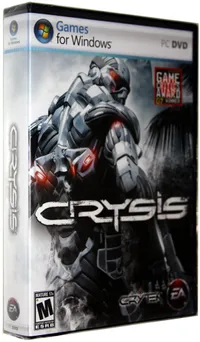But Can It Run Crysis? 10 Years Later
For Crysis' 10th anniversary, we tested all of the flagship AMD and Nvidia GPUs released over the last decade at 1080p, 1440p, and 4K.
1920x1080 Results
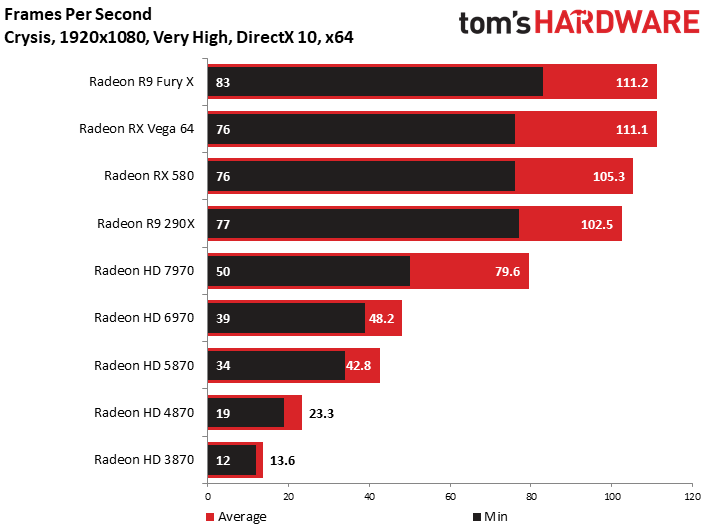
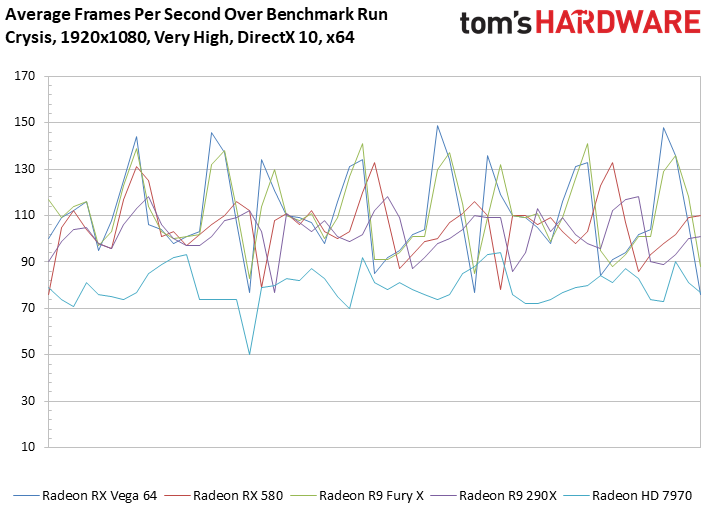
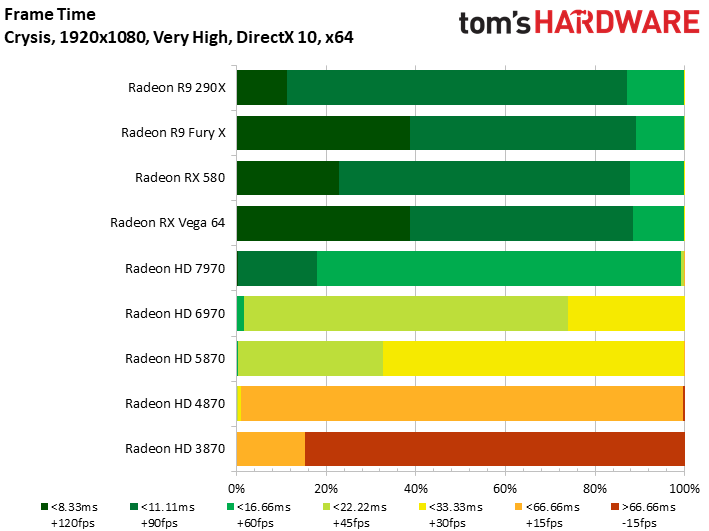
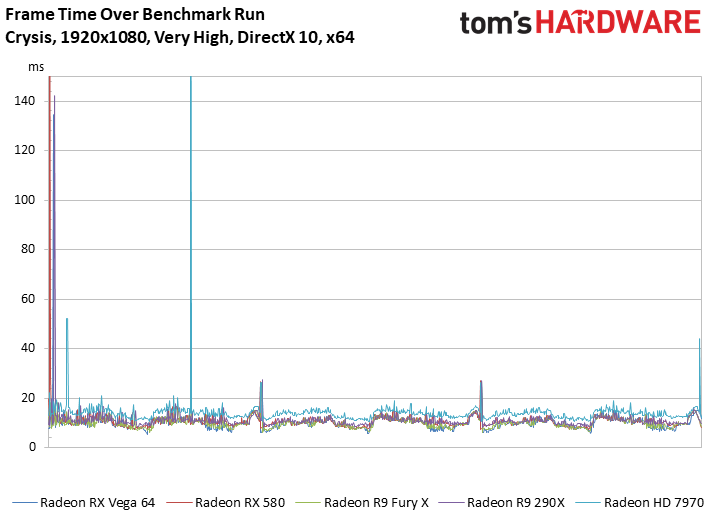
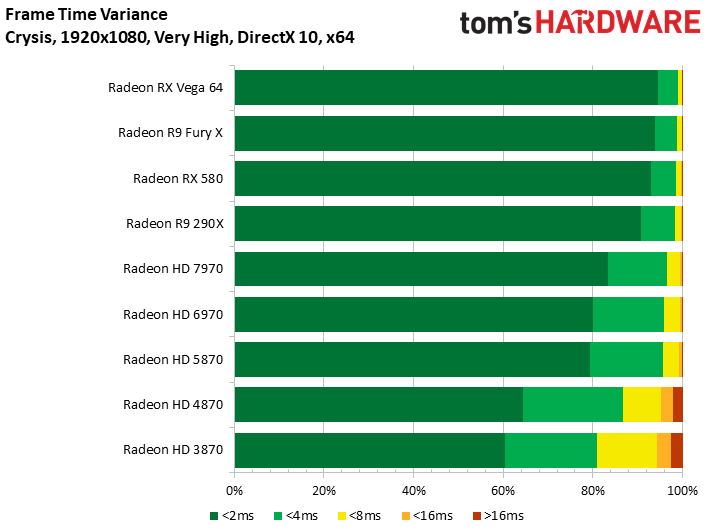
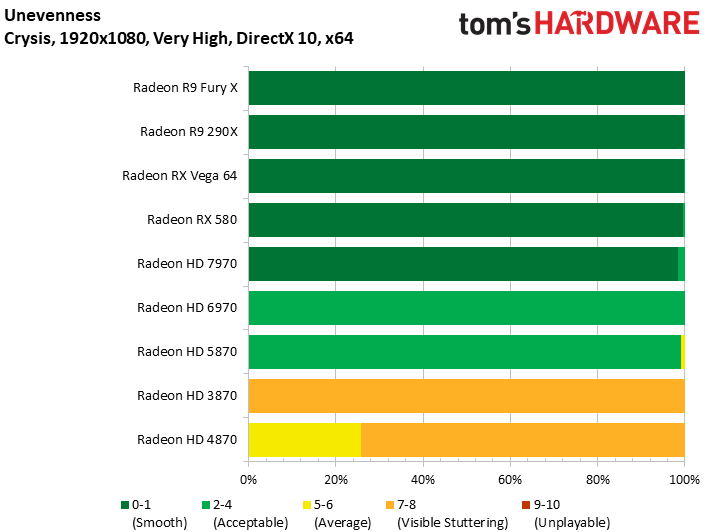
AMD’s Radeon RX Vega 64 is more than eight times faster than its 10-year-old Radeon HD 3870 at 1920x1080.
Clearly, though, Crysis isn’t graphics-bound at these settings (nor is it host processing- or memory-bound—we checked). Instead, the game scales up aggressively through Radeon R9 290X, yielding a ~7.5x speed-up in the six years between Radeon HD 3870 and R9 290X. Impressive!
The biggest jump happens between Radeon HD 6970 and 7970, when AMD switched from its VLIW4-based TeraScale 3 architecture to the RISC single instruction, multiple thread Graphics Core Next design. The 7970’s Tahiti GPU boasts about 1.63x the number of transistors as 6970’s Cayman, boosting performance by roughly 1.65x in the process. Alright, so Tahiti also enjoyed the advantage of 28nm manufacturing. But it nevertheless went down in history as a big step forward for the company, despite stiff competition from Nvidia’s GeForce GTX 600-series cards back in 2012.
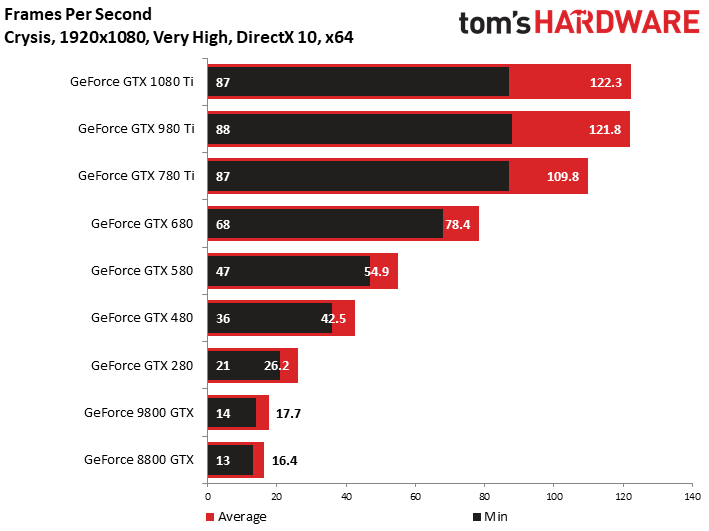
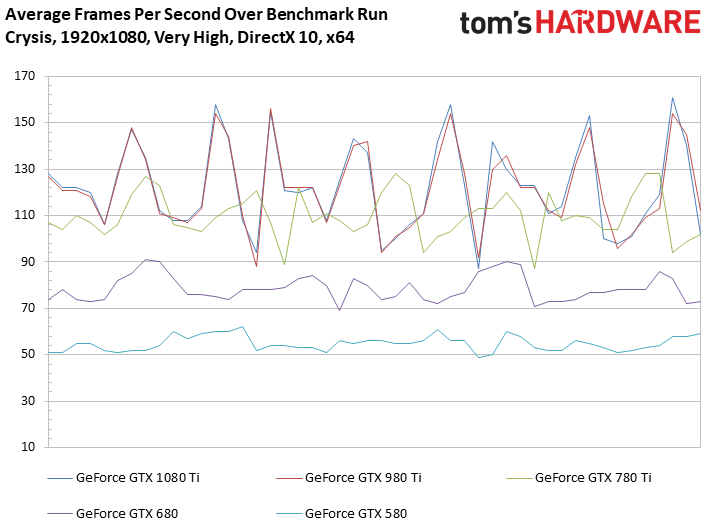
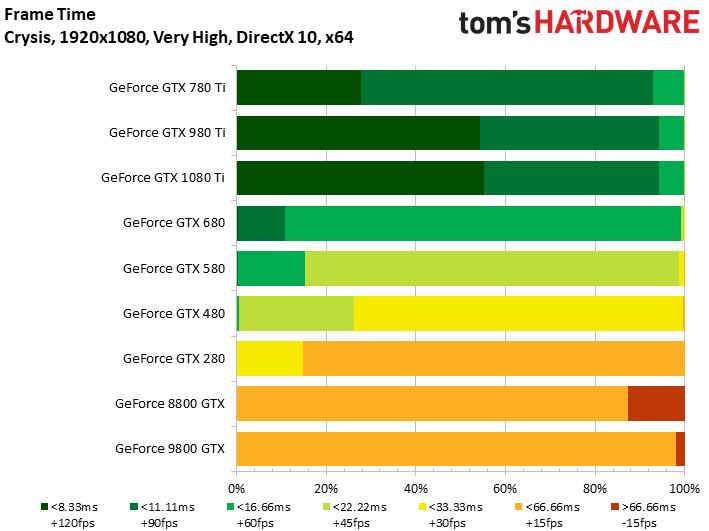
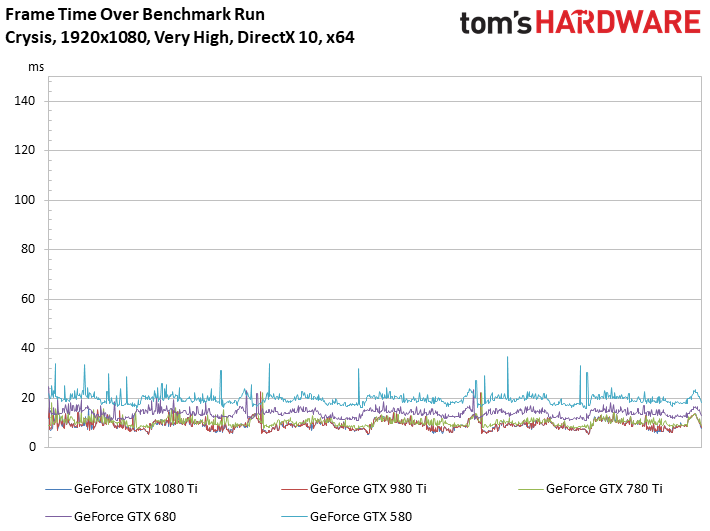
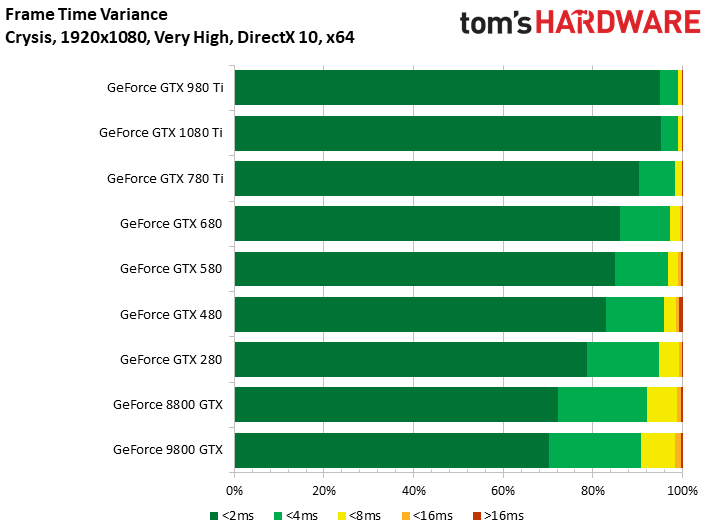
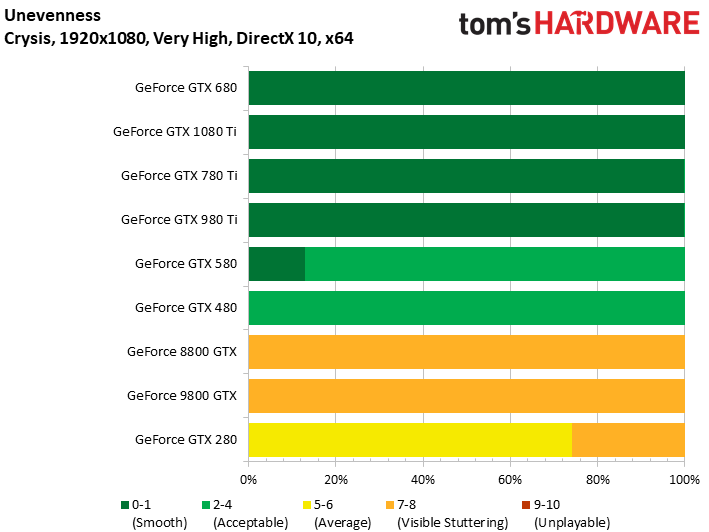
Although we’re not necessarily pitting AMD against Nvidia in today’s little exhibition, so many historical battles are repeated with the charts next to each other. Radeon HD 7970 and GeForce GTX 680 are at each other’s throats…again. GeForce GTX 580 has the edge over Radeon HD 6970, just as it did seven years ago. Radeon HD 4870 even trails GeForce GTX 280 by a hair, mirroring our findings from 2008!
Nvidia’s top-end cards are bottlenecked at 1920x1080, just like AMD’s. However, the ceiling is higher.
From the 2006-era 8800 GTX to the 2015 flagship 980 Ti, GeForce cards speed up ~7.4x.
Not that we had any doubt, but at 1920x1080, both AMD and Nvidia offer several generations of graphics cards that make Crysis playable at its lushest quality settings. Does the same apply after dialing in 8x anti-aliasing? Let’s check…
Get Tom's Hardware's best news and in-depth reviews, straight to your inbox.
8x Anti-Aliasing Results
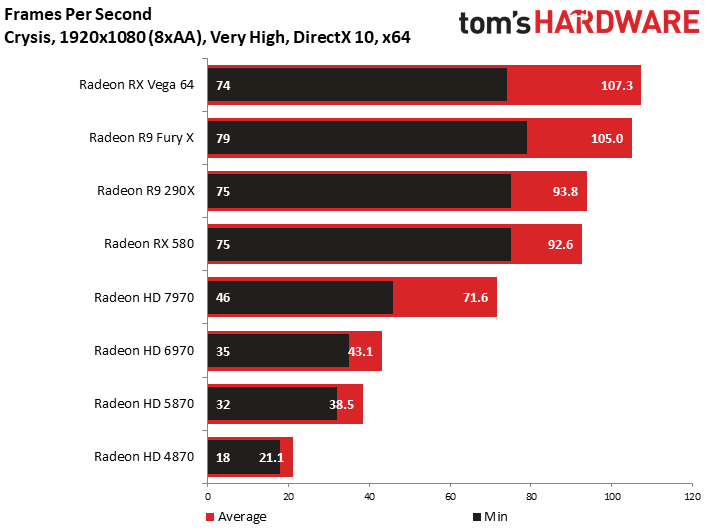
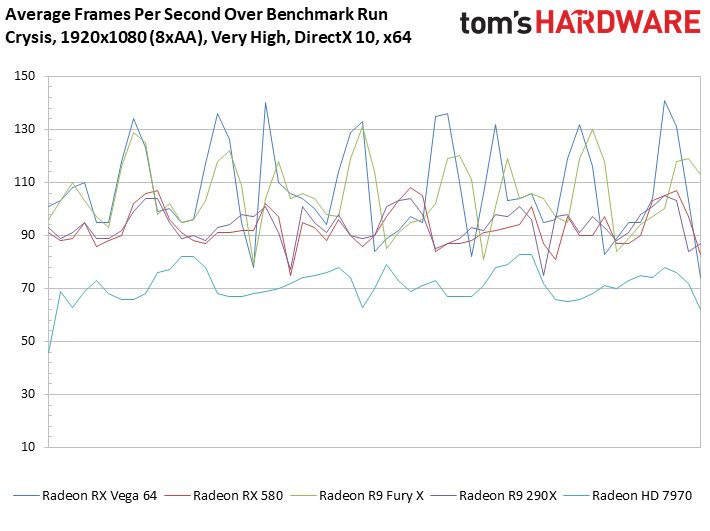
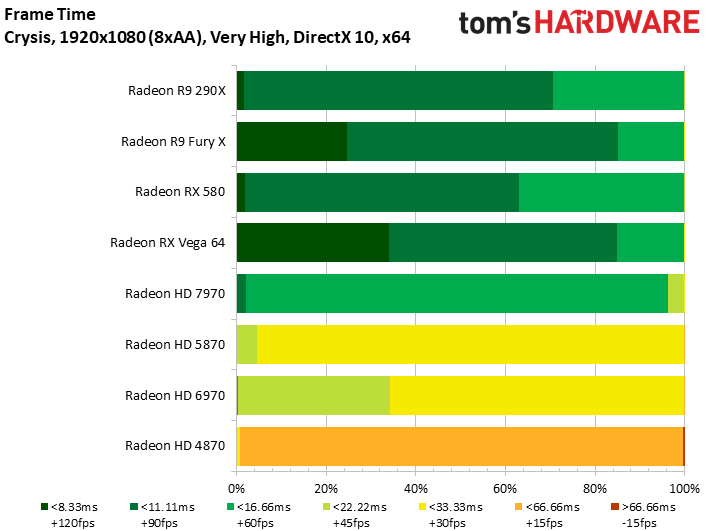
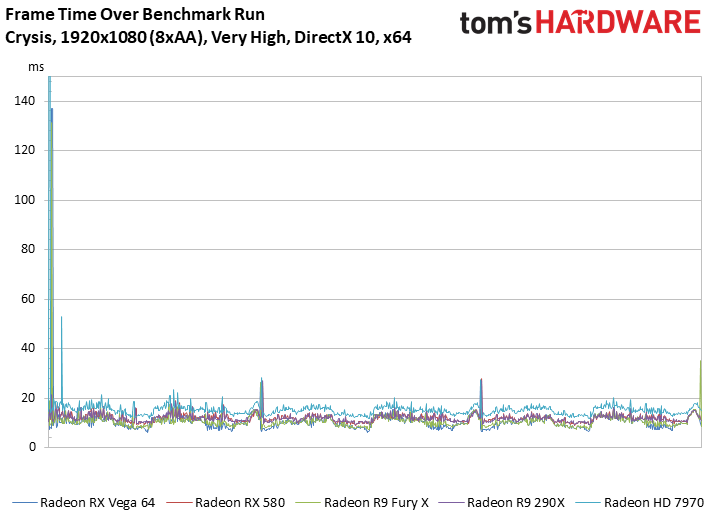
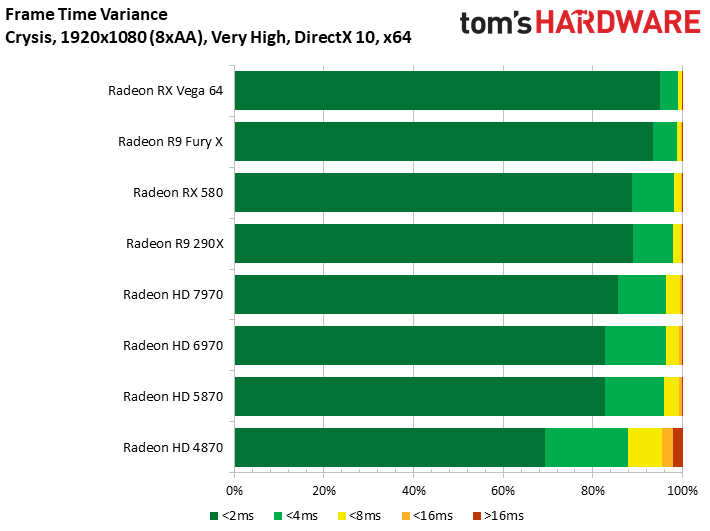
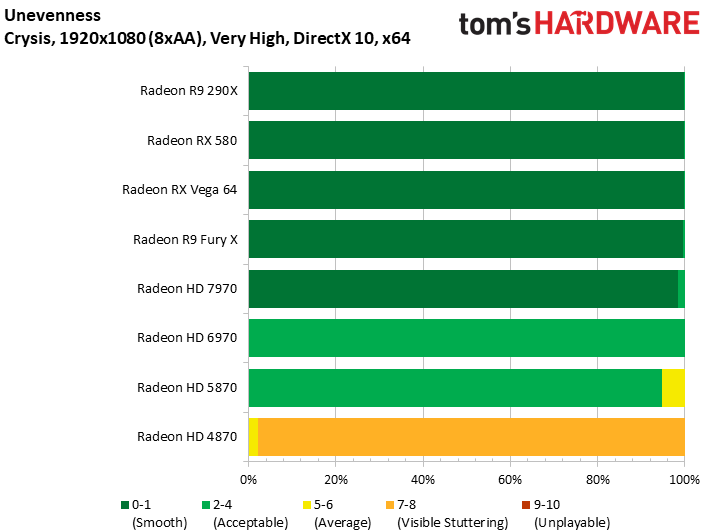
Switching on anti-aliasing (four samples per pixel, quality mode eight) does little to brutalize AMD’s many generations of flagships, cutting a few frames per second, on average, from our results. Lower-end cards maintain 90% of their performance with anti-aliasing applied, while Vega 64 achieves 96% of its original frame rate. You’re still looking at playable averages all the way down to Radeon HD 7970.
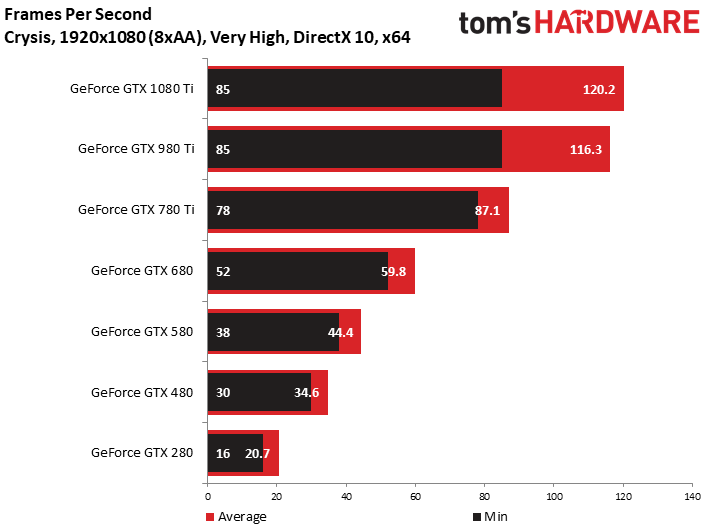
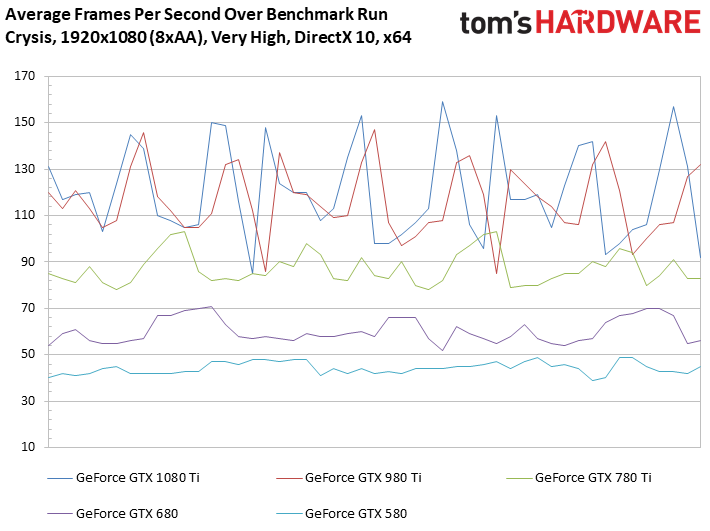
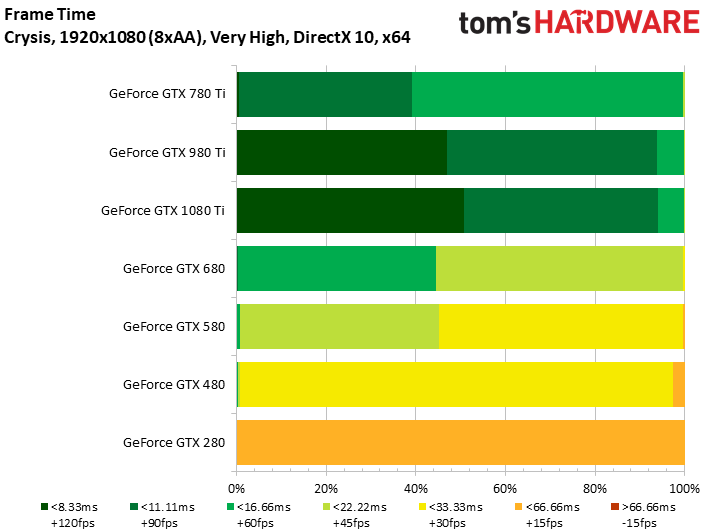
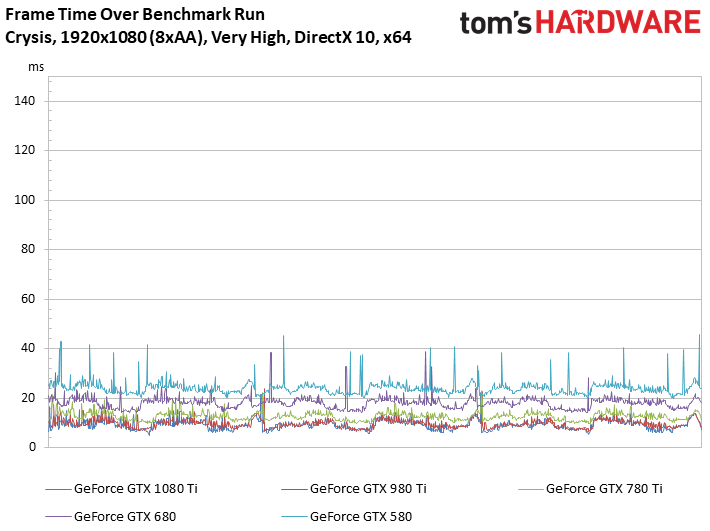
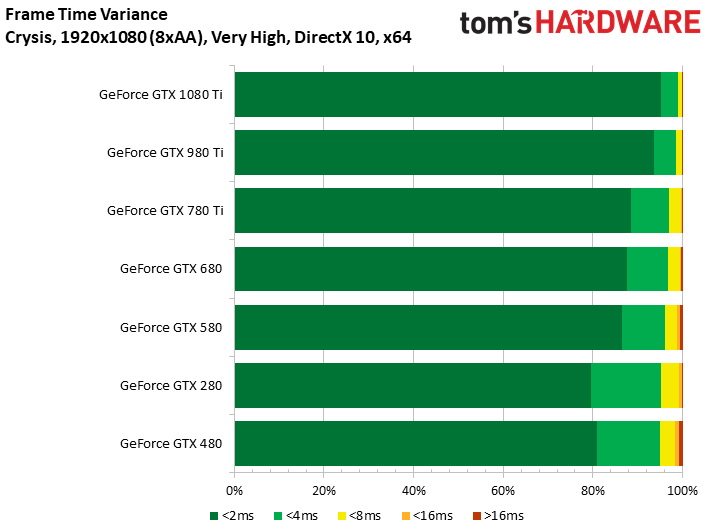
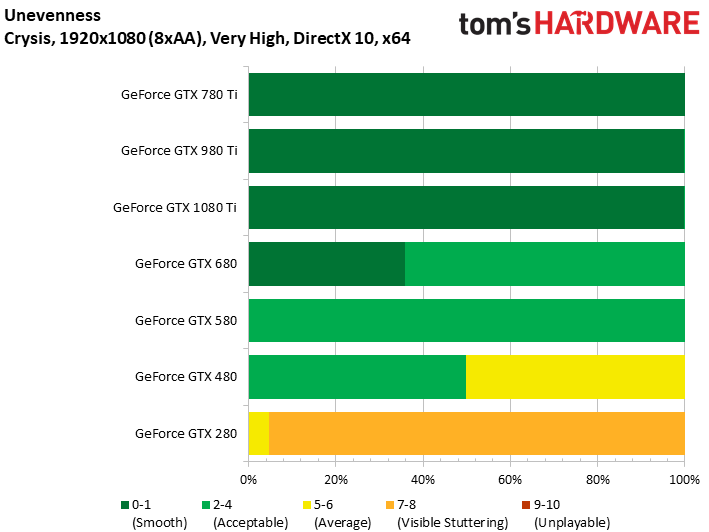
Despite a similar 8x anti-aliasing setting, Nvidia cards take a much bigger hit.
Then again, it’s hard to know exactly what technology is being used on the jaggies in this sequence; Crytek's settings aren't explicit on the matter. For the purposes of our exhibition, we’ll simply refrain from drawing comparisons between AMD and Nvidia. In a newer game, we’d perform a deeper analysis of output quality to ensure both companies are delivering similar fidelity. But it's kind of a moot point with Crysis.
Lower frame rates aside, GeForce GTX 1080 Ti remains bottlenecked at this relatively low resolution. A more taxing workload extends the difference between GeForce GTX 780 Ti and 980 Ti, though. Without AA, the 980 Ti was just 11% faster. Enabling anti-aliasing grows GM200’s advantage to almost 34%.
MORE: Best Graphics Cards
MORE: Desktop GPU Performance Hierarchy Table
MORE: All Graphics Content
-
lun471k Quite interesting. I wonder how the rest of this generation's GPUs would compete in a Crysis benchmark!Reply -
Luis XFX This is awesome! Good work! I've always wondered how today's most powerful GPUs would handle Crysis. Crazy to see that even the GTX 1080ti still barely breaks 60fps at 4K. This game is a beast.Reply -
envy14tpe Wawawow. Love this comparison. Never seen anyone do this..seriously. Once again Tomshardware is the best.Reply -
wh3resmycar 10 years ago i debated someone in the forums that Crysis was crap since his supposed rig ran Unreal 3 games and COD4 just fine. i wonder if that guy is still here. i mean side by side circa 2017 put Crysis along COD4 you'd see and probably understand why the latter was so much ahead of its time. The Map scale and the physics, too.Reply -
gasaraki So the question "But can it run Crysis?" still applies. Only one card can run crysis at 4K above 60fps.Reply -
Kridian What would really be interesting is if they redid Crysis with Chris Robert's updated engine (Star Engine/Lumberyard). What kind of performance gains would we see from a software standpoint?Reply
-
hdmark can anyone give me a clean cut answer as to why crysis was/is so demanding? Is it that they took all of the new graphics technologies at the time and put them into one game? and then over time those technologies matured/were optimized and now we can see games that are better for less?Reply
was it just poorly optimized?
-
jonajohnson3 Right now im playing games like Gmod and Tf2 qute well with a 11 year old pc! Yes they might be really old titles to but they still run well. So for me yes I can run a 11 year old pc.Reply -
DataMeister @HDMARK, I think the game engine for the original Crysis was just poorly optimized, because Crysis 2 ran better on the same hardware.Reply -
therickmu25 There will never be another Crysis. Imagine a developer releasing a game where a 1080ti couldn't run it on the highest settings in 2017. 1. Optimization played a factor I know, but 2. Because it looked 20x better than any game available.Reply
It was a product of the times where developers were still trying to push the envelope for cutting edge graphical techniques.. Pretty cool
